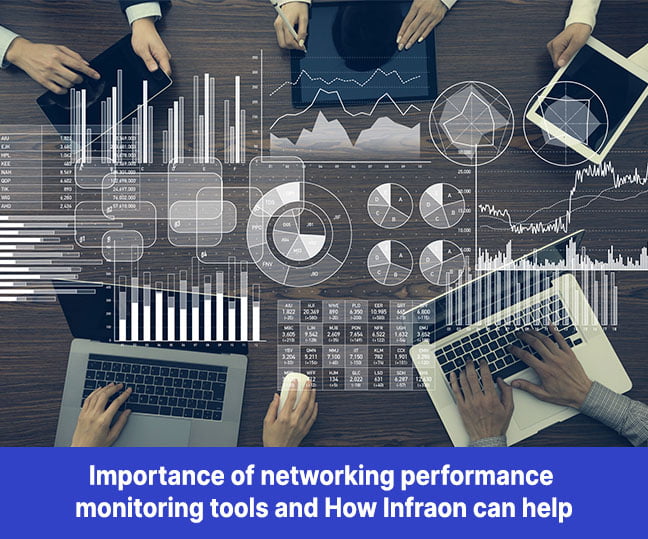The telecommunications sector, a leader in technological advances, relies heavily on ITOps Telecom strategies to manage its complex infrastructure and service offerings. Strong IT operations are vital in today’s data-driven world—where uninterrupted connectivity and instant access are non-negotiable. Telecom companies deal with massive data traffic, dynamic network management, and constant customer interactions, making ITOp Telecom a core pillar of their operational framework. The effectiveness of these operations directly impacts service quality, operational costs, and the agility to adapt to new technologies and evolving customer demands.
Unified ITOps analytics emerges as a pivotal force, driving operational efficiency and bolstering service quality in an industry where every moment counts.
Related article: How integrated ITOPs can enhance security and compliance in banking
Importance of Analytics and Reporting in ITOP Telecom
Analytics and reporting in telecom link operational performance with customer satisfaction. They provide insights into network conditions, customer behavior, and service quality, enabling proactive management and quick problem resolution. Effective reporting turns complex data into actionable insights, aiding informed decisions, identifying improvements, and finding innovation opportunities. Analytics enhance service delivery and satisfaction by understanding customer preferences, while predictive analytics foresee system failures or turnover, allowing preventive actions that boost performance and loyalty.
The Concept of Unified ITOps Analytics and Reporting
Unified ITOps analytics and reporting integrate various analytical tools and systems into one framework, offering a complete view of IT operations. This integration breaks down data silos, improves precision, and accelerates analysis, ensuring consistent data evaluation across all sources. It streamlines IT management, enhances analytics benefits, and improves coordination of operational components, leading to better performance, reduced costs, and improved customer experiences. This unified approach fosters a culture of continuous improvement and innovation, which is essential for staying competitive in Telecom.
Challenges Faced by Telecom Companies in IT Operations
Telecom companies navigate a complex environment where managing extensive network systems and processing substantial data volumes are standard requirements. These challenges are exacerbated by the need to manage and analyze these data flows in real-time to ensure optimal performance of the network.
Network Complexity
Modern telecom networks comprise various technologies, equipment, and protocols, making monitoring, maintenance, and upgrades a challenge. Each component, like routers, switches, base stations, and data centers, must work together seamlessly. Any disruption can lead to service issues that affect the customer experience.
High Data Volumes
Telecom networks generate vast amounts of data from call records, logs, usage patterns, and service quality indicators. Managing this data requires robust aggregation, storage, and analysis systems to extract useful insights for business decisions and operational improvements.
Need for Real-Time Processing
Telecommunications require rapid data processing to be effective. Real-time processing is essential for proactive network management when issues can be addressed before they impact customers. It also supports dynamic resource allocation, ensuring optimal performance and minimal downtime.
Impact on Service Delivery and Operational Costs
Network complexity, high data volumes, and real-time processing needs affect service quality. Inefficiencies can lead to slower response times, network failures, and customer dissatisfaction. Additionally, these challenges drive up operational costs due to the resources needed for management and potential costs from failures.
Unified IT operations analytics and reporting and their integration offer sustainable levels of service quality and operational excellence in a competitive market.
Benefits of Unified ITOps Analytics and Reporting
Improved Decision-Making through Consolidated Data Insights
Quick and accurate decision-making can greatly influence service quality and business outcomes in the telecom industry. Unified ITOps analytics combines diverse data points across the organization into a comprehensive view. This aggregation helps managers and technicians see patterns and trends typically difficult to detect in disjointed data sets, leading to better-informed decisions that can enhance service delivery and operational performance.
Enhanced Operational Performance by Reducing Silos and Improving Data Flow
By integrating analytics and reporting within a single framework, telecom companies can break down data silos that traditionally segment information by department or function. This holistic view not only speeds up data processing but also enhances collaboration among different teams. When information flows seamlessly across the organization, it enables faster problem-solving and response times, crucial for maintaining network reliability and customer trust.
Cost Reduction through Optimized Resource Management and Process Automation
A unified approach to ITOps analytics enables more effective resource management. By analyzing comprehensive data on network use and performance, telecom companies can optimize the deployment of both physical and human resources. Moreover, process automation made possible through advanced analytics can reduce manual effort and associated costs. Automating routine tasks and workflows minimizes errors and frees staff to focus on more complex, value-adding activities.
Better Compliance and Security Management with Centralized Monitoring
Centralized monitoring through unified ITOps analytics strengthens compliance and security postures. With comprehensive oversight, telecom companies can ensure all operational facets adhere to regulatory standards and security protocols. Central monitoring simplifies the detection of anomalies and potential security breaches, allowing for swift action. This is crucial in an industry where data integrity and security are paramount to maintaining customer trust and avoiding legal and financial repercussions.
Related article: Why IT admins and Gen AI need to work together
Conclusion
Integrating unified ITOps analytics and reporting is a holistic approach to data management that offers clearer insights and more informed decision-making, directly impacting service quality and operational success. By embracing a unified system, telecom operators can significantly enhance their ability to monitor, analyze, and respond to the industry’s dynamic demands. Therefore, investing in unified ITOps analytics and reporting is about handling data better for sustained success in Telecom.



















